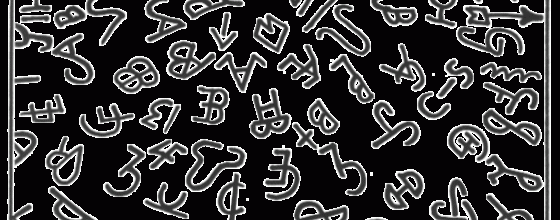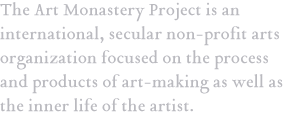Theophane the Monk was an artmonk
Next week I’m heading to the Vedanta Society’s Olema retreat center in Marin County. One thing I’m definitely bringing is Theophane the Monk‘s Tales of a Magic Monastery. Here’s one of his tales: There’s a monk there who wears a red robe. I was wondering why, but it was my little son who dared to […]
9/10
Via A Vow of Conversion: They say that in any average monastery nine out of ten who come to try the life end up leaving. It’s all about handling the pressure of interpersonal relationships. Either you give up and go away or you stay and make it work. Ultimately there is only one way to […]
Pagan Monasticism Links
While paganism, or neopaganism, isn’t necessarily secular or interfaith (the word “pagan” can denote a wide range of groups, from the decidedly polytheistic, pantheistic, animistic, or magickal, to the merely “not Judeo-Christian”) it would appear that pagans are up to some interesting monastic stuff: Order of the Horae – Pagan Monasticism FAQ Journal of a […]
Economies of Merit at play in Qinghai
Last year, the Taer Monastery reported ticket sales revenues of 36 million yuan (US$5.48 million). The money was used to pay every monk about 10,000 yuan in living allowances and to maintain the monastery buildings. In 2010, the per capita net income of farmers and herdsmen in Qinghai was 3,863 yuan, according to the National […]
Jim Woodring is an artmonk
Finally ordered a print of one of my favorite li’l art pieces, signed by cartoonist Jim Woodring. Woodring’s words about Hieronymous Bosch’s Garden of Earthly Delightsadequately reflect my feelings about Woodring’s work: “I see endless beauty and mystery in it. Like the world it reflects, it can never be understood, even when it is […]
Sister Corita Kent was an Artmonk
Via Here: Corita Kent was an artist, teacher, philosopher, political activist, and possibly one of the most innovative and unusual pop artists of the 1960’s. However, what is perhaps even more incredible is that she was a catholic nun. Corita: Passion for the Possible (exerpt) from BlackLake on Vimeo.
Brands, beliefs, practices, objects, rituals and community

In developing ideas for an open-source monastic tradition in my last post, I’ve been thinking of religions and lineages as more or less illusory aggregates of individuals and their communities, unified by a common brand more than anything else. Individuals have beliefs. Communities support these beliefs, or they do not. Occasionally, especially in the early stages, […]
Creating an Art Monastery

Living in intentional community is not for everyone—the idea triggers an autoimmune response in some people, for whom it might signify the sacrifice of personal autonomy and individuality—but once you develop a taste for the stuff, it doesn’t fade. I unabashedly love it.
Since I began this blog-inquiry into monasticism just six months ago, dissecting Taoism, Vedanta, Eastern and Western Christianity, as well as the various vehicles of Buddhism into what I have called the elements of monasticism, community is an element I haven’t written about directly much at all. Yet it figures in my mind as an important piece of what all monasticisms are aiming at. For those individuals who dwell in abbeys, ashrams, friaries, priories, sketes, lavras, mathas, mandirs, koils, gompas, lamaseries, wats, viharas, community is a powerful spiritual practice.
So we’re making a monastery.Living in intentional community is not for everyone—the idea triggers an autoimmune response in some people, for whom it might signify the sacrifice of personal autonomy and individuality—but once you develop a taste for the stuff, it doesn’t fade. I unabashedly love it.
Since I began this blog-inquiry into monasticism just six months ago, dissecting Taoism, Vedanta, Eastern and Western Christianity, as well as the various vehicles of Buddhism into what I have called the elements of monasticism, community is an element I haven’t written about directly much at all. Yet it figures in my mind as an important piece of what all monasticisms are aiming at. For those individuals who dwell in abbeys, ashrams, friaries, priories, sketes, lavras, mathas, mandirs, koils, gompas, lamaseries, wats, viharas, community is a powerful spiritual practice.
So we’re making a monastery.
Pico
Renaissance humanist philosopher Pico della Mirandola, who died at 31 in 1494 shortly after determining to become a monk, wrote “The Oration on the Dignity of Man” when he was only 23: He [God] received man, therefore, as a creature of undetermined nature, and placing him in the middle of the universe, said this to […]




